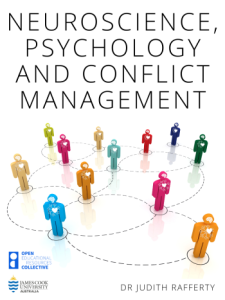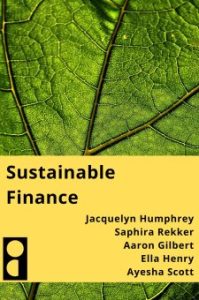In 2023, 12 grants were awarded across three categories, totalling $38,000.
Use the links below to read about the open textbook projects funded in each category:
- Category: Kickstarter
- Indigenising Teaching, Learning, and the Student Experience
- Japanese Introductory 1
- A Teacher’s Guide to Outdoor Education Curriculum: Victorian Edition
- Powerful Play: Nurturing Imagination and Creativity in Education through Conceptual PlayWorlds (renamed Why Play Works: Conceptual PlayWorlds Inspiring Learning, Imagination and Creativity in Education).
- Australian Designs Law
- Category: Small cohort
- A Yolŋu Philosophy Reader
- Designing Learning Experiences for Inclusivity and Diversity: Advice for Learning Designers
- Handbook for Developing Learners’ Uncertainty Tolerance Across Health Professions Education
- Neuroscience, Psychology and Conflict
- Category: Large cohort
- Sustainable Finance
- Cultural Safety in Health: Professional Practice, Pedagogy, & Research
- Engineering on Country
Category: Kickstarter
Indigenising Teaching, Learning, and the Student Experience
Lisa Ogle (University of Newcastle)
Shellie Smith (University of Newcastle)
Indigenising Teaching, Learning and the Student Experience is a practical guidebook for students and educators seeking to incorporate Indigenous perspectives, knowledges, and cultures into their courses and learning. Written predominantly by Indigenous authors, each chapter is supported by real case studies from the University of Newcastle, showcasing successful strategies and challenges in Indigenising various disciplines. This textbook aims to empower educators to address the systemic exclusion of Aboriginal and Torres Strait Islander people in higher education and promote social justice through inclusive and culturally diverse curricula.
Japanese Introductory 1
Iori Hamada (Monash University)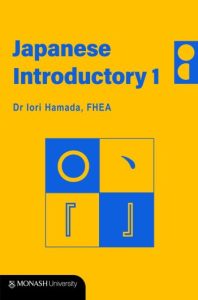
Japanese Introductory 1 aims to provide educational materials that are accessible, holistic, in-depth and up-to-date, meeting the needs of multicultural and multilingual societies. Currently, most Japanese language textbooks used in universities in Australia and New Zealand, including Monash University, are designed for American curricula, which often require more study hours, making them incompatible with Australian curricula. Further, these textbooks mainly focus on ‘standard’ Japanese language and culture, neglecting the linguistic and cultural diversity in the target country. This textbook project aims to provide a thorough and nuanced understanding of Japanese language and culture, which includes an examination of the Ainu indigenous languages and cultures, as well as a comparison to the languages and cultures of the Aboriginal and Torres Strait Islander peoples. For instance, it will highlight that both groups have undergone colonisation and marginalisation, but their experiences are unique to their specific contexts. Additionally, it will also explain how the Ainu language and Aboriginal and Torres Strait Islander peoples’ languages are distinct from other language families, such as Japanese, Indo-European, or Austronesian, although the diversity within each language family is unique.
A Teacher’s Guide to Outdoor Education Curriculum: Victorian Edition
Dr Josh Ambrosy (Federation University)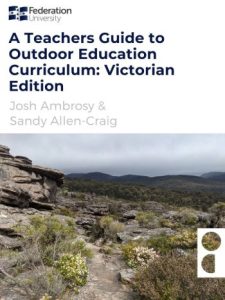
Sandy Allen-Craig (Australian Catholic University)
A Teachers Guide to Outdoor Education Curriculum: Victorian Edition, provides both pre-service and current teachers of outdoor education a concise handbook to help with the development of curriculum and assessment in a range of educational settings. The book combines research-backed ideas, with practical examples and contemporary exposition of policy advice to become a ‘one-stop-shop’ for developing outdoor education courses in Victorian schools. This book aims to help bridge a significant theory-praxis gap that continues to be observed in far too many schools delivering outdoor education. Doing so, it helps teachers better align their programs to both the curriculum and contemporary research-based practices.
Powerful Play: Nurturing Imagination and Creativity in Education through Conceptual PlayWorlds
Marilyn Fleer (Monash University)
Kelly-Ann Allen (Monash University)
Dr Leigh Disney (Monash University)
Dr Liang Li (Monash University)
Lara McKinley (Monash University)
Janet Scull (Monash University)
Dr Anne Suryani (Monash University)
Dr Gloria Quinones (Monash University)
The focus of this textbook is on play and learning through a Conceptual PlayWorld. This evidence informed model helps teachers to plan innovative practices relevant for a range of discipline concepts. The teachers and children after reading/hearing a children’s book or nursery rhyme or fairytale jump into the story as characters from the book/story, go on adventures, meet challenges that they solve and return to the real world enriched, and excited to go back in for another adventure (potentially bringing with them things they have learned to enrich their play). The 5 characteristics of planning for a Conceptual PlayWorld are: 1) Selecting a story, 2) Designing an imaginary play space; 3) Planning an exciting entry and entry into that space; 4) Planning a problem that the characters of the story (children in role) will meet and need to solve using concepts; 5) Planning the role of the adults in the imaginary play. (Note: renamed Why Play Works: Conceptual PlayWorlds Inspiring Learning, Imagination and Creativity in Education.)
Australian Designs Law
Dr Mitchell Adams (Swinburne University of Technology)
Design plays a crucial role in our daily lives, influencing our perceptions of products and how we interact with them. A well-designed product can enhance its functionality, usability, and appeal, making it more desirable to consumers. Design-related industries contribute AU$ 67.5 billion per annum to the Australian economy. In a global economy, success in many industries depends on controlling the intangible aspects of products. In the legal context, a design is defined as the visual appearance of a product, including its shape, configuration, pattern, and ornamentation. Designs law seeks to protect the originality and uniqueness of designs, preventing others from copying or reproducing them without permission. Overall, designs law in Australia aims to encourage and protect originality and design innovation while also balancing the interests of designers, businesses, and consumers.
Throughout the book, the reader is provided with practical guidance and illustrative examples to help readers navigate the complex world of designs law. With its comprehensive coverage and clear, accessible writing style, Designs Law in Australia is an essential resource for legal practitioners, students, and anyone interested in this vital area of intellectual property law.
Category: Small cohort
A Yolŋu Philosophy Reader
Dr Waymamba Gaykamaŋu (Charles Darwin University)
Yasunori Hayashi (Charles Darwin University)
Over twenty-five years, senior Yolŋu knowledge authorities, elders, and researchers have been sharing traditional concepts in their collaborative work of teaching, research, and monitoring & evaluation in various Indigenous-led initiatives at Charles Darwin University – including through the Yolŋu Studies program and more recently the First Nations Sovereignty and Diplomacy Centre. Now for the first time a selection of the most important of these philosophical statements will be collected into a single volume and made available to students of Indigenous languages and cultures through Australia and New Zealand and the world. The volume will also be of particular interest to Government and NonGovernment organisations and policy developers.
Designing Learning Experiences for Inclusivity and Diversity: Advice for Learning Designers
Keith Heggart (University of Technology Sydney)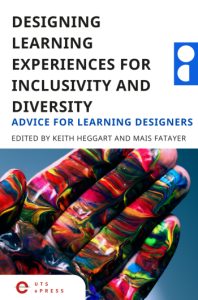
Camille Dickson-Deane (University of Technology Sydney)
Mais Fatayer (University of Technology Sydney)
Puvaneswari P. Arumugam (Deakin University)
Katrina Thorpe (University of Technology Sydney)
Susan Page (Western Sydney University)
Shaun Bell (University of Technology Sydney)
John Vulic (University of Technology Sydney)
Nhung Nguyen (Auckland University of Technology)
Katie Duncan (University of Technology Sydney)
Rhiannon Hall (University of Technology Sydney)
Bruna Contro Pretero (Australian National University)
The development and implementation of inclusive and diverse learning experiences is a vital consideration for educators in higher education. Increasingly, learning designers play a significant role in this process. This textbook offers postgraduate students a comprehensive guide to designing learning experiences that are accessible, equitable, and inclusive. It provides advice, principles, and practical strategies to help learning designers create a learning environment that recognizes and celebrates diversity while promoting equitable learning outcomes.
Handbook for Developing Learners’ Uncertainty Tolerance Across Health Professions Education
Michelle D. Lazarus (Monash University)
Dr Georgina C. Stephens (Monash University)
Gabriel García Ochoa (Monash University)
Rosalie Kickett (Kickett Consulting)
Gitanjali Bedi (Monash University)
Gabrielle Brand (Monash University)
James Bonnamy (Monash University)
Liza Barbour (Monash University)
Julia McCartan (Monash University)
Libby Callaway (Monash University)
Zubin Austin (University of Toronto, Canada)
Tina Brock (University of Colorado)
Melanie Farlie (Monash University)
Basia Diug (Monash University)
Bethany Howard (Monash University)
Penny Robinson (Monash University)
Caroline Wright (Monash University)
Steve Wise (Royal Perth Hospital)
Healthcare professions education has long centred on the acquisition of knowledge, and objective testing of students’ learning. However, the field of healthcare is increasingly recognising the imperative to also develop healthcare learner’s capacity to effectively manage uncertainty. This is particularly relevant in the face of artificial intelligence whose limitations are managing complexity, uncertainty and ambiguity. Thus, uncertainty tolerance (i.e. adaptive responses to uncertainty), becomes not only critical for contemporary healthcare, but also a future workforce-protecting skill. Yet, practical and accessible support for educators in developing curriculum focused on uncertainty tolerance are absent.
This book will serve to fill this critical gap by raising healthcare professional and healthcare educators’ awareness of the uncertainty tolerance construct, exploring the impact health professions education (and educators) can have on the future workforce’s ability to manage uncertainty effectively, and providing practical approaches (including exemplar curricular templates) for supporting this essential workplace-ready, transferable attribute.
Neuroscience, Psychology and Conflict
Dr Judith Rafferty (James Cook University)
The functioning of our brain, hormones and neurotransmitters significantly affects our behaviours, cognitions, and social experiences. Therefore, links between neuroscience and different areas of psychology are increasingly being recognised, studied and taught. Psychology and behavioural neuroscience are also greatly relevant to the field of conflict analysis and resolution, since they help explain why conflict between people occurs, and how people think, feel and behave when in conflict. Thereby, neuroscience and psychology can support the analysis, management and resolution of intrapersonal, interpersonal and intergroup conflict.
This textbook integrates conflict resolution practice, conflict resolution studies, behavioural neuroscience and three branches of psychology, including social psychology, personality psychology and cognitive psychology. Students are introduced to foundations of behavioural neuroscience and the three branches of psychology and consider this knowledge to discover why conflict arises within and between people, how conflict develops and how it may be managed or resolved.
Category: Large cohort
Sustainable Finance
Jacquelyn Humphrey (University of Queensland)
Dr Saphira Rekker (University of Queensland)
Ella Henry (Auckland University of Technology)
Ayesha Scott (Auckland University of Technology)
Aaron Gilbert (Auckland University of Technology)
In recent years sustainability has become central to business education and thinking. At the same time, there has been rapid growth in and demand for sustainable finance by governments, corporations, NGOs, investors and individuals. Concerns about corporations’ contribution to environmental and social problems has meant that “finance as usual” is being challenged. It is evident that the traditional view that increasing shareholder wealth as the sole metric upon which to make business decisions (“shareholder primacy”) is no longer appropriate for today. Sustainable finance therefore provides a more wholistic view of finance and asks the question of how business and investors can incorporate environmental and social factors, including indigenous knowledges, into financial decision-making.
This textbook provides a thorough exploration of sustainable finance and how it is implemented today. We show the corporate and the investor viewpoint, as well as detail how government and non-government bodies have contributed to the development of sustainable financial markets. We also showcase Māori views of sustainable finance. Throughout the textbook, readers are provided with engaging, interactive exercises to cement their learning.
Cultural Safety in Health: Professional Practice, Pedagogy, & Research
Lana Elliott (Queensland University of Technology)
Deb Duthie (Queensland University of Technology)
Mary-Claire Balnaves (Queensland University of Technology)
Jennie Briese (Queensland University of Technology)
Yasmin Antwertinger (Queensland University of Technology)
Patricia Obst (Queensland University of Technology)
Shelley Hopkins (Queensland University of Technology)
Kate Murray (University of Canterbury)
Cultural safety seeks to address power and privilege imbalances in institutions and throughout society. It addresses systemic, scientific, and personal racism, which create and sustain health inequalities in neo-colonial societies such as Australia and Aotearoa/New Zealand. The cultural safety model was developed by Māori nursing scholar, Dr Irihapeti Ramsden, and colleagues in response to students’ concerns about the safety of Māori students undertaking nursing training in Eurocentric monocultural institutions in Aotearoa/New Zealand. It is hence an Indigenous and explicitly political model for considering and addressing institutionally ingrained inequities. The application of cultural safety navigates the relationships between history, culture, society, and inequity and acknowledges all forms of power imbalance and discrimination including but not limited to racism. Given its origins and what cultural safety seeks to achieve insofar as the promotion of equity by our health systems, ensuring culturally safe practice is of critical importance to students who intend to enter health and caring professions.
Engineering on Country
Cat Kutay (Charles Darwin University)
Grant Maher (Jabin)
Susi Bertei (Charles Darwin University)
Timothy Boye (University of Technology, Sydney)
Sai Rupa Dev (Engineers Without Borders Australia)
Matthew Hughes (University of Canterbury)
Elyssebeth Leigh (University of Technology, Sydney)
Our First Year Engineering students and some of our older students and alumni are studying engineering concepts from First Nations practices. These are valued a new perspective on many issues covered in our degrees such as sustainability and a holistic approach to design. However, our students lack resources for researching these topics. The textbook is to be used in the University courses that link to Engineers Without Borders (EWB) Challenge at Charles Darwin and Griffith Universities and University of Technology Sydney. The book contains case studies, scenarios and exercises that we hope will immerse you in the culture and practice of our First Peoples.

